Introduction
Just a couple of years ago, full size keyboards were very much the norm according to most big gaming brands. You’d see a TKL board here or there but not much more. These days the landscape is quite different. Small form factor keyboards are becoming more and more popular (in part thanks to a growing custom keyboard scene, but also because many famous gamers have started using them) and brands have picked up on that.
HyperX is the latest company to embrace this in the form of their Alloy Origins 60. What you get here is pretty much a compact version of their highly popular Alloy line of keyboards, complete with their very own key switches. Whether this board does enough to set itself apart from the growing number of mass produced 60% keyboards is a question we’ll leave to our reviewer so read the full review to find everything you want to know about the board!
At A Glance
HyperX Alloy Origins 60
Used by 1 player ()The Alloy Origins 60 is an extremely decent and very reliable 60% keyboard, but it’s not more than that.
Pros
- Nice PBT keycaps
- Sturdy case
- Smooth switches
Cons
- Noisy stabilizers
- Typing sound is subpar
Specs
| Form Factor | 60% |
|---|---|
| Switches | HyperX Red, HyperX Aqua |
| PCB | Non-Hotswappable |
| RGB | Yes |
| Height | 3.7cm |
| Width | 29.6cm |
| Length | 10.5cm |
| Weight | 781g |
First Impressions
What immediately draws attention when you first lay your eyes (and hands) upon this keyboard is that it feels extremely solid. I’m not just talking about the heavy aluminum body; the PBT keycaps also feel very good. Something that I also appreciate is the fact that they didn’t go all out on the branding. Look at this thing from the top and you’d never even know who made it. The only thing that gives away the manufacturer is the printed HyperX logo on the front side of the spacebar and the debossed HyperX logo on the back.
Contrary to this board’s bigger sibling, the Alloy Origins Core, we now find the USB-C cable port on the left side of the board. I didn’t exactly mind the fact that it’s on the right on the Origins Core but I do know that a lot of people prefer the cable to be either on the left or in the middle so it’s good to see that HyperX made this particular choice.
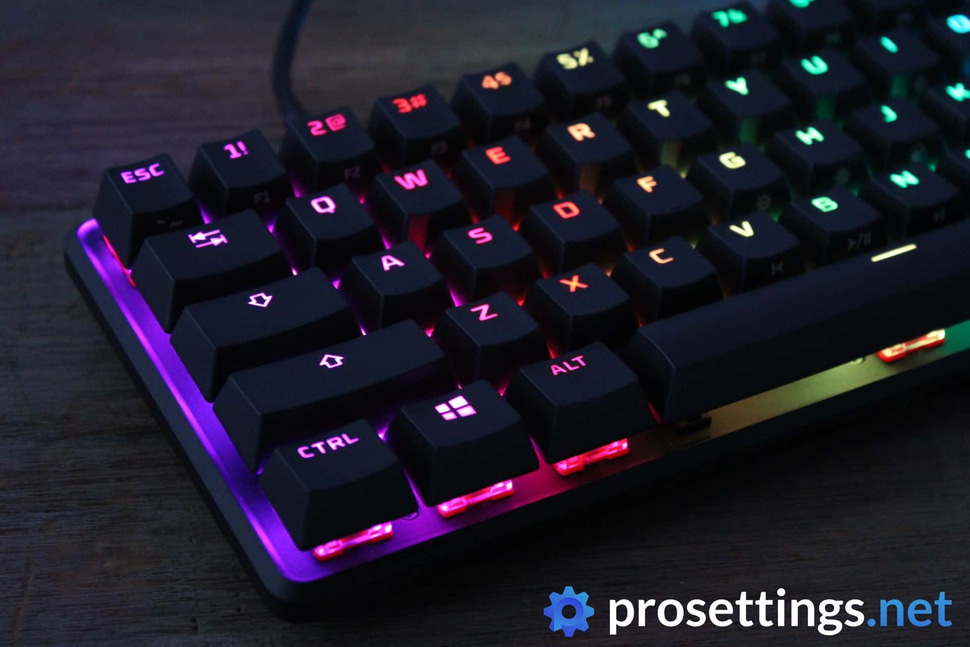
As it the case with the other HyperX boards I’ve tested, this Alloy Origins 60 feels extremely well built. The brushed aluminum case is heavy and solid as can be, and there’s absolutely no way I could get it to bend or flex. This board definitely feels like it can survive some rough LAN trips, and that’s always a good thing with these ‘tournament style’ keyboards.
What’s also nice is the RGB. It’s vivid, lively, and the transitions are extremely smooth. Couple that with a slight reflection that bounces off of the aluminum case and you’ve got something that’s, in my book at least, a real winner. Of course you don’t need RGB for performance reasons so I’ll never factor that in when judging a keyboard, but for people who like this sort of stuff it’s a nice bonus.
Packaging
HyperX have really tried to make this a nice and complete package. Inside the box you get the board, the detachable USB-C cable, and the usual documentation, but you also get an additional spacebar and HyperX branded keycap along with a keycap puller.
Those of you who read these reviews with any sort of regularity will know that I always like it when brands include a keycap puller with their boards. Sure, it’s cheap and you can order one for yourself easily, but it’s very handy to have it included. Even if you’re not planning on swapping out the caps (the Origins 60 has a standard bottom row by the way) it’ll come in handy when it’s time to clean the board. Including this is a small gesture, but it’s one that always gets appreciation from me.
Features and Build
As most people will probably know by now, a 60% keyboard does away with the F row, arrow keys, and numpad (click here for our article on common keyboard sizes) but that doesn’t mean that those keys aren’t there for you to use. These buttons that’ve been cut in order to save space can be accessed by pressing the FN key in combination with another key.
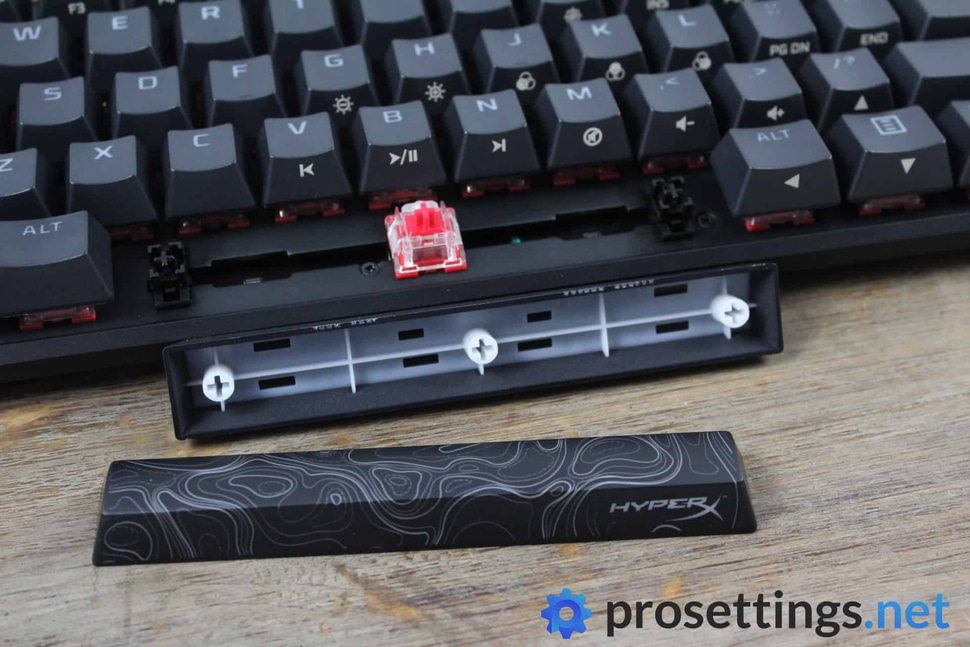
What’s really nice here is the position of the arrow keys. As a content writer I tend to use those a lot, and if they’re positioned on awkward keys it can be quite bothersome for me to use a 60% board for writing and so on. Here they’re next to the spacebar on the right side, making it so that I can easily press the FN key with my pinky finger and then blindly press the arrow key that I need. I didn’t even need any time to adjust. That shows that HyperX have really thought about little touches like that, which is something that I appreciate.
More good news comes in the form of the keycaps. Gone are the ABS caps that I found on the Origins Core and in are some really decent PBT caps. These are (in my opinion) superior over low quality ABS keycaps because they don’t develop that shine after prolonged usage and they just feel more pleasant to type on. It seems like a lot of manufacturers are moving on to stock PBT caps, and that’s an evolution that I can only applaud. The sooner those thin and low quality ABS caps disappear from the market (except for budget boards) the better.
On the bottom of the board you get four rubber strips to hold the Origins 60 in place, as well as two flip feet that will allow you to place the board at your preferred angle. These feet are very sturdy and have rubber elements to them as well, so there’s no need to worry about the stability if you’re someone who likes to use these.
All in all I’ve got to say that I am really impressed by this keyboard. From the well thought out second layer button placement to the stock PBT caps to the RGB and very solid case: HyperX have been doing their homework.
Performance and Everyday Usage
The Origin 60 came with HyperX’s Red switches. These are basically HyperX’s take on Cherry MX Red switches, though they feel a bit faster due to the lower actuation point and travel distance. I don’t think that that’s an actual tangible difference (in the sense that I don’t feel a massive speed difference between the HyperX switches and the Cherries) but I do really like the HyperX Reds. They feel a bit smoother than their Cherry counterparts and overall it’s just a really well made switch.
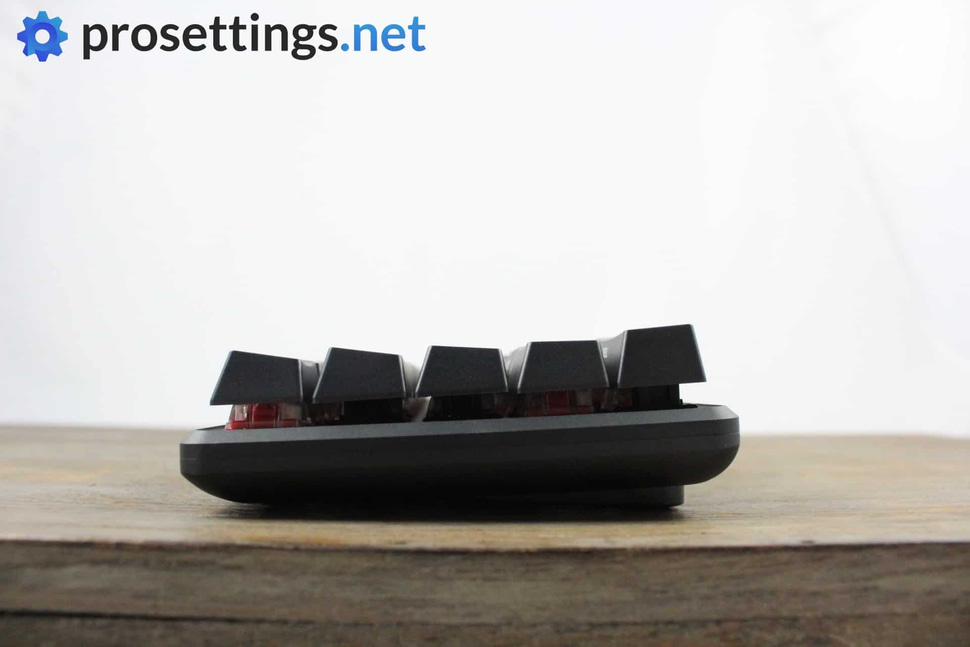
So far, so good then, but unfortunately HyperX did drop the ball somewhat with the stabilizers on the board. Especially the spacebar has quite some rattle to it on my copy, and that’s a shame since that does bring down the typing and gaming experience somewhat. It is true that most ‘casual gamers’ (I write it like that because I don’t mean it as in insult in any way) probably don’t really care about the stabilizers on a keyboard, but it’s still a shame to see that they neglected this a bit. It’s an easy (and pretty cheap I would think) way to score some points with the enthusiast crowd, and it’s a bummer that this board does so many things right only to then trip up at the stabilizers.
It doesn’t impact performance so it’s not a huge problem, but since more and more manufacturers are making these straight to the point 60% boards it’s important for any product that wants to stand out to that it gets (mostly) everything right. Of course I’m not talking about custom keyboard experiences (that would make a board much more expensive than the MSRP of this one) but it’s a shame that with almost every one of these 60% boards that I’ve tested in recent times there’s at least one thing wrong. Yes, those could be small things, but they can have a big impact on the overall experience. That said: if you don’t have a whole lot of experience with (higher tier) mechanical keyboards and/or you don’t care about the stabilizers then this really is a non-issue, so make of this what you will.
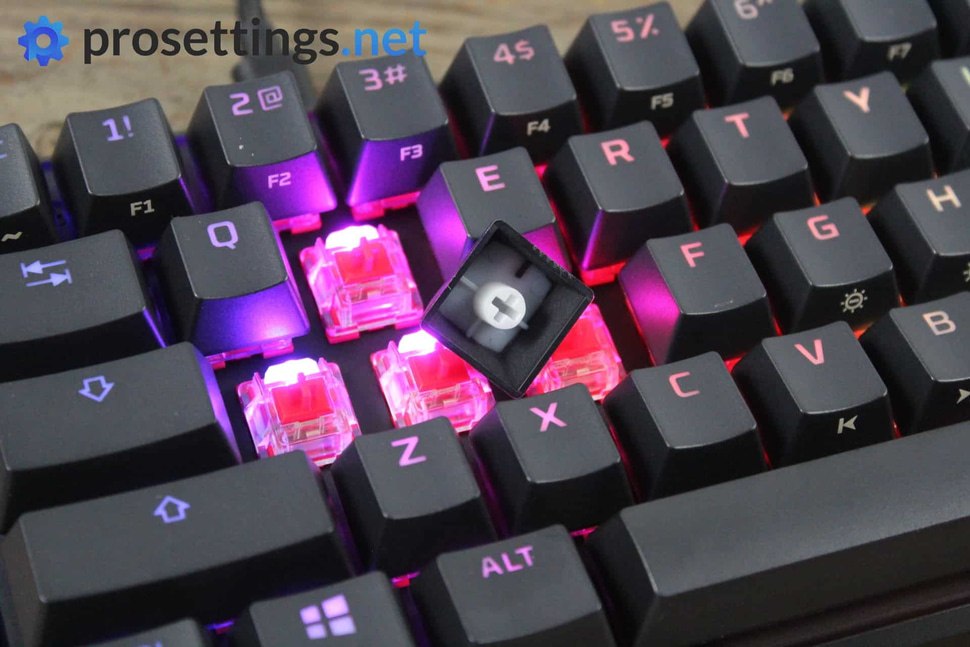
As with all of HyperX keyboards and products you can configure this one in their NGENUITY app. Over the past couple of months I’ve come to rather appreciate this app, even though I’m still not a big fan of the fact that it’s a Windows app. It is a very lightweight program, and even though the customization possibilities aren’t as vast as with some of their competitors’ software you can still do pretty much anything you’d want to do with it, including macro recording and the likes. There’s room for up to three different profiles to save to the board itself, so if you don’t like the idea of having to use software in order to use this keyboard then you can just download it once and uninstall it.
Conclusion
The Alloy Origins 60 is an extremely decent and very reliable 60% keyboard, but it’s not more than that. Of course there’s not a whole lot to set your product apart if you’re making a 60% keyboard (seeing as you have no room for dials or screens or extra buttons and what not) so if you really want to stand out in this market it’s important to get the basics right if you’re asking me. The Alloy Origins 60 gets close: it has nice PBT keycaps, a very sturdy case, nice and smooth linear switches, and some well thought out decisions (like the location of the arrow keys in the second layer) but it stumbles a little bit when it comes to the stabilizers. A noisy and rattly spacebar doesn’t have an impact on the actual performance, but it is a bit of a shame that they didn’t manage to make it sound a bit better because that would’ve elevated this board to one that ‘handles all of the basics with ease.’
That doesn’t mean that it’s a bad keyboard though: if you’re looking for a 60% board with a reliable build quality and nice linear stock switches this should definitely be one to look out for.
This product was received for free from the manufacturer and given to our reviewer to test and review. Brands and manufacturers have no editorial control over our reviews. For more information, check out our review FAQ.


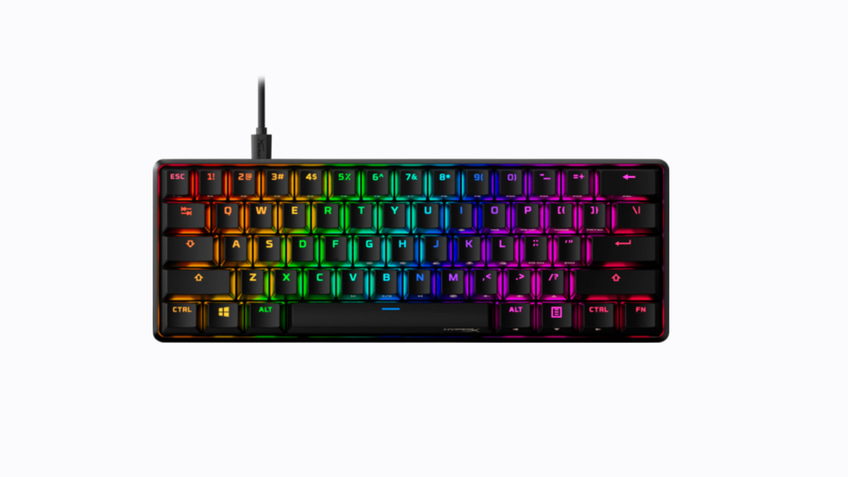



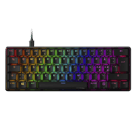


Does this comes pre lubed
I don’t have it lying around here to check but if there’s factory lube there isn’t a whole lot of it so I wouldn’t say that it’s pre-lubed, definitely not in any noticeable capacity if I recall correctly.